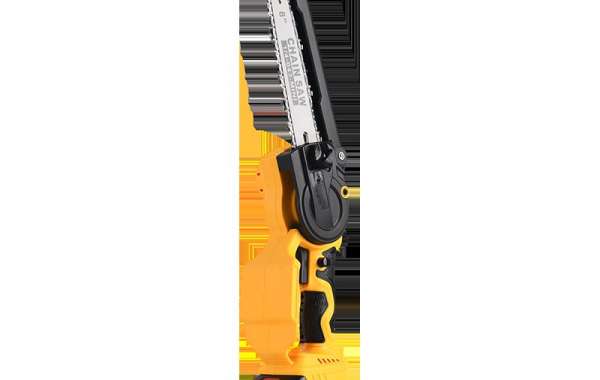The proliferation of the mini chainsaw reflects a broader shift towards right-sized tools that match specific user needs without unnecessary bulk or complexity. This tool embodies a design philosophy focused on accessibility, allowing individuals who may find traditional chainsaws daunting to perform essential cutting work with confidence and control. Its utility extends beyond simple branch trimming; a mini chainsaw is adept at processing kindling, cutting PVC piping, notching wood for crafts, and even assisting in building small wooden structures. This versatility makes it a valuable addition to any toolkit, bridging the gap between manual hand saws and larger power saws for a well-rounded approach to wood cutting.
Ergonomics and user experience are central to the design of a modern mini chainsaw. Manufacturers invest considerable effort in balancing the tool's weight and shaping its body to minimize strain on the user's wrist and arm. Features such as tool-less chain tensioning systems simplify adjustments in the field, while automatic oilers ensure a consistent lubricant supply to the bar and chain during operation, preserving their lifespan and maintaining cutting efficiency. The low noise output of an electric mini chainsaw is another considerable benefit, reducing noise pollution and allowing for use at times when a louder gas-powered tool would be disruptive. Furthermore, the instant start capability of an electric motor—activated by simply pressing a trigger—removes the frustration of pull-starting a cold engine.
From a perspective of sustainability and property management, the mini chainsaw encourages proactive maintenance. Homeowners are more likely to regularly prune and trim trees with a tool that is easy to handle and store, promoting healthier plant growth and reducing the likelihood of storm damage from weak limbs. The ability to process fallen branches and small trees on-site for firewood or mulch also supports a cycle of reuse within the property. While the cutting capacity of a mini chainsaw has clear boundaries, understanding its intended scope is key to satisfaction. It is not designed for felling large trees or bucking heavy logs, tasks which rightly belong to more powerful machinery. However, for the multitude of smaller, precise cutting jobs that define yard work and DIY projects, the mini chainsaw stands as a capable, efficient, and remarkably practical tool that delivers significant utility from a compact package.







